What is pasta: pasta, sauce or a dish of both? We will try to give the answer to this question in this article. We will tell you about the origin of pasta and their victorious march around the world after the discovery of America and the invention of the machine for spaghetti. The very word "pasta" is familiar to Russian people. But the most common refinement to the term immediately comes to mind: dental. The dictionary gives us the definition of "pasta." This is the name for a homogeneous gruel-like mass of a rather dense consistency, in which the solids content, ground into a powder, exceeds twenty percent. To this characteristic tooth and tomato paste correspond. But this is not food! Italian pasta has a similar etymology, but nothing more. The term, which later came to mean a flour dish with sauce, appeared in the Renaissance, when Greek cooks were preparing for the Italian patricians. And the etymology of this pasta goes back to the Hellenic word "pastos", which simply means gravy. In late Latin, pasta is already just “dough”.

Macaroni and noodles - for whom is the palm?
Pasta is that rare case when the name appeared much later than the dish itself. Marco Polo is believed to have brought pasta home to Venice from his travels to China. It was rice noodles, which supposedly served as a model for a wheat analogue - Italian pasta. The Chinese, as evidence of their historical superiority, present a bowl with this petrified dish found in the tomb of a man who lived four thousand years ago. But I must say that since the Neolithic revolution, when people learned to cultivate cereals, such food has been observed in different cultures. At first it was flour mixed with water, which was dried in the sun. Something similar to spaghetti appears in images on the walls of ancient Egyptian tombs. And in the cookbook of the first century AD, we find a recipe for a dish similar to fish climbing. In medieval Italy, even before Polo, they knew "pasta." The etymology of this word comes from the verb maccare - knead, knead. Martino Korno, who lived in the eleventh century and served as a cook for a senior Roman prelate, left us the oldest documented recipe for cooking a dish, which is now called "pasta." It was a dessert when pasta was cooked in almond milk and seasoned with sweet spices.
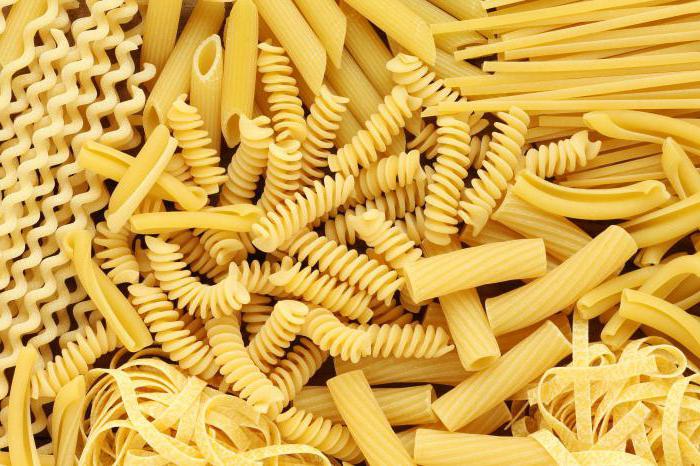
The popularity of pasta
A natural question begs. If dough products already had a term (pasta), then why was it necessary to duplicate it and call it “pasta”? Or is it like “bread” and “bakery products”? And most importantly: where is the term that refers us to the “homogeneous, mushy mass of dense consistency”? Why is pasta a paste? The answer lies in the sauce. Pasta in Italy is often called products that have a hole inside. Until the nineteenth century they were considered a delicacy. They were boiled in milk, seasoned with butter, cheese and sweet seasonings. After the discovery of America, tomatoes appeared on the tables of Europeans. For some time, the fruits of nightshade culture were wary. But in Sicily, the poor peasants decided to take a chance and, for a long time languishing in a pan, tomatoes with basil and garlic, invented the excellent "salsa di pomodoro". And when Cesare Spadacchini invented a pasta machine (it resembles a meat grinder), pasta became very affordable for the general population.
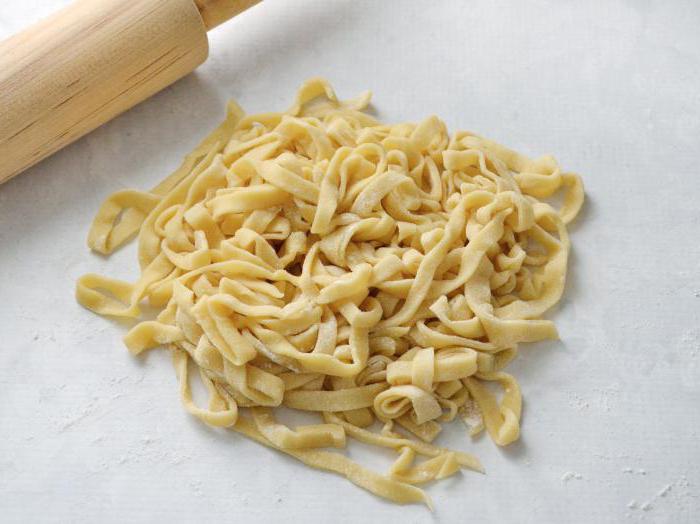
How paste differs from pasta
What we sell under the guise of vermicelli is completely unsuitable for preparing a delicious flour dish with sauce. After all, pasta is Italian cuisine. And pasta for the dish should be appropriate. They are made from flour, which is obtained by grinding durum wheat grains. Such cereals ripen in areas with an appropriate Italian climate. When buying pasta, you need to look for the label SEMOLA on the label. Products made from such flour will remain a little hard, they will not boil into porridge, and in a colander they will not stick together in one lump. They do not need to be washed - this is nonsense, according to the Italian housewives. Indeed, from cold water, real pasta will become too “tight” in taste. Every paste, unlike our noodles, has microscopic grooves on its surface. This ensures that the sauce is held on pasta, and does not slip from them.
Types of Italian Noodles
So, we found out that pasta is both Italian pasta and dishes from them. Moreover, lasagna is also included in this category. Paste is called wide layers of dough for cooking this dish. In the town of Pontedassio, not far from Genoa, in a special pasta museum, a notarial deed dated February 4, 1279 is stored, confirming the existence of dough products in those days. Maybe the Chinese came up with noodles, but she acquired such a variety of forms only on Italian soil. It seems to me that it makes no difference whether the pasta will be straight and thin (spaghetti), curved by worms (vermicelli), bent by spirals (kavatappi), in the form of butterflies (farfalle) or shells (conquilla)? Italians believe that form is of utmost importance. Each type of pasta is prepared with its own sauces. And some are served as a snack - for example, cannelloni (large tubes) or conciglioni (huge shells). These types of pasta are stuffed with cheese, spinach or minced meat and baked in sauce.
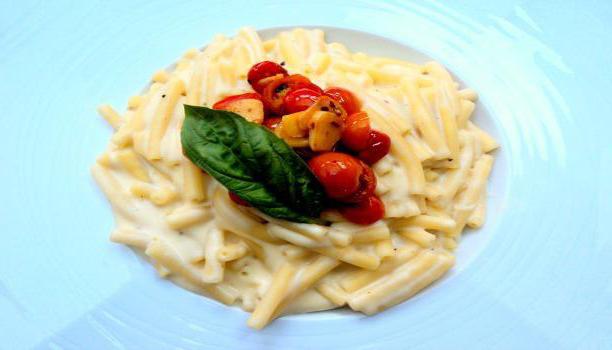
Application in Italian cuisine
But to say that pasta = pasta will not be entirely true. We have already mentioned that climbing is included in this category. But she is not alone. We can say that all dishes of Italian cuisine, the preparation of which involved boiled dough, are called pasta. And this means that the analogue of our dumplings, too. In Italy, there are several types - also of different shapes and the most unthinkable fillings. The most common are ravioli - square dumplings inside which you can find anything from smoked salmon to chocolate. And there is capeletti, which means “hats”, and alolotti. Depending on the size and shape of the pasta, they are used in different dishes. For example, pastes called acini di pepe (pepper grains) and orzo (rice) are added to soups and salads. There is pasta, which is mainly used for casseroles (ziti, cappellini). If we ask the Italian the question: “Is pasta or pasta or sauce?”, He will find it difficult to answer. There is a tradition of making certain types of noodles with certain gravy. Some pastas are served with creamy sauce, others are made exclusively with tomato sauce.
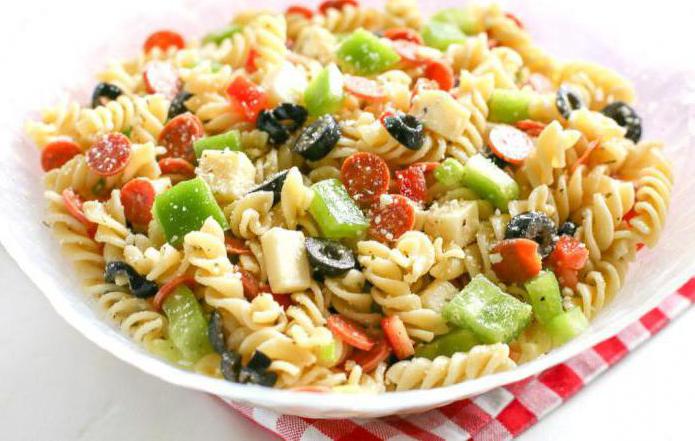
Color spectrum
Durum wheat pasta has a rich golden hue. But Italians are a people with a non-scaling culinary fantasy. For them, pasta is "the art of living beautifully." Therefore, they add various natural dyes to pasta dough. So, dried and grated tomatoes make the paste red, beets - pink, bell peppers or carrots - orange, spinach - green. Particularly effective on the table are pasta of anthracite color. Such makes them cuttlefish ink. Naturally, natural color additives affect the taste of pasta.
How to cook pasta
First, dough products need to be welded. This action must be performed in parallel with the preparation of the sauce, so that both ingredients of the dish ripen to the table at the same time. So, put on the fire a large pot of water. When it boils, salt and pour a teaspoon of vegetable oil. Throw pasta. We stir with a wooden spoon so that the products do not stick to the bottom of the pan or stick together. We do not break long spaghetti - this is barbarism. Just drop one edge in boiling water, the dough will soften, and everything else will also go under water. Cooking time depends on the thickness of the products and is usually indicated on the package. But one cannot blindly trust what is written. Italians believe that pasta should be cooked to the state of "al dente". Translated, this means "by little tooth." Here we are trying them and fished pasta. If it bites well, but a white dot remains in the middle, then it’s ready. Throw the pasta into a colander. In no case do not rinse - this will completely ruin the taste of the dish.
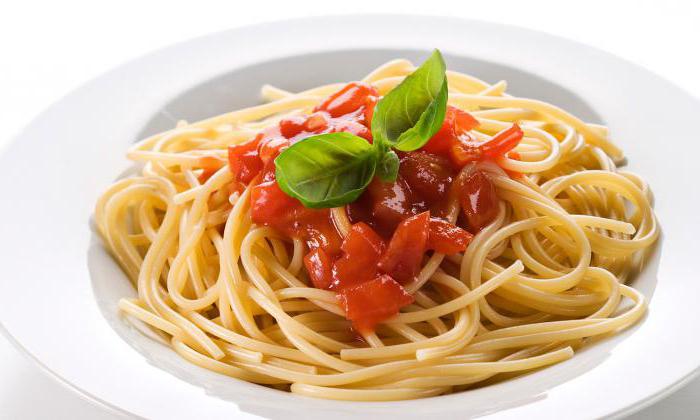
Cooking sauce
Now pay attention to the second component of the dish called "Italian pasta". Recipes sold at home give us about three hundred kinds of various sauces. But there is one golden rule: the thicker and shorter the pasta, the thicker the gravy should be. Another note: it is customary to sprinkle the finished dish with parmesan, but the exception is pasta with fish or seafood. As for sauces, then in each region of Italy they are their own, special. In the north of the country, meat, mushrooms are put in gravy, and on the islands - fish, seafood. Outside of Italy, about five types of sauces are used - Bolognese, carbonaria ... But the main delicacy of authentic gravy for pasta is “pesto a la genovese”. Heat olive oil in a pan, put basil leaves and half the head of garlic. Then the seasonings that gave off the aroma are removed. Dip the nuts of Mediterranean pine and diced sheep’s cheese into the butter.
How Italian pasta is served on the table
Recipes (at home, as we see, it is quite possible to make such a dish yourself) stipulate that both ingredients of the dish - pasta and sauce - must be cooked at the same time. If the gravy is complex and requires a long thermal treatment (for example, with mushrooms), then you need to do it earlier. By the way, this gravy is ideally suited to penn (feathers) - sliced obliquely and short pasta. Heat the olive oil (50 g) and fry for five minutes one hundred grams of porcini mushrooms or champignons, cut into pieces. Pour a quarter cup of white wine and 150 ml of cream. Salt and season with pepper sauce. The plate is better to warm up. Put the paste in it. Top with sauce. We put grated parmesan for sprinkling next to it.